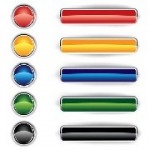 There are several different punctuation styles for lists. As always, it’s important to be consistent and use the same style throughout your document.
There are several different punctuation styles for lists. As always, it’s important to be consistent and use the same style throughout your document.
Bullet points, often called dot points, are more commonly used than numbers in lists, but numbers are useful if the order matters or if you want to refer to specific points within the list.
Most lists are introduced with a colon ( : ), not a semicolon (a common mistake). Occasionally, a list will be introduced by a sentence ending in a full stop rather than a colon.
With all these styles, you need to decide whether to make your first-level bullet points flush or indented. You also need to use the same type of bullet point throughout. The most common is the round black bullet point. For second-level bullet points, the most common are dashes or round hollow circles.
Lists using full sentences
With lists that are made up of full sentences, use normal sentence punctuation, as in the following list.
Some editing tips:
- Read your document the next day with fresh eyes.
- Read your headings separately to see if they are consistent.
- Ask someone else to read your document.
Lists with points relating to a stem statement
Semicolons were traditionally used in lists to separate each bullet point, but although this is still correct, they are not used as often today. Legal writing is probably the main exception.
If you do use semicolons, the accepted practice, as in this list, is to:
- put a semicolon at the end of each point;
- use ‘and’ after the second-to-last point; and
- finish with a full stop.
A common style is to use lower case for the first letter in each bullet point, and a full stop after the last bullet point.
Before you travel overseas, remember to:
- make sure your passport is current
- find out if you need any vaccinations
- check the expiry dates of your credit cards.
Many organisations have succumbed to the Microsoft default and now recommend starting all lists with initial capitals. Whether or not you use a final full stop is also a style choice. As always, consistency is important.
Before you travel overseas, remember to:
- Make sure your passport is current
- Find out if you need any vaccinations
- Check the expiry dates of your credit cards (with or without a full stop)
Lists with single words or short phrases
I used to differentiate between short and longer lists, but readers failed to see this distinction, so I recommend using the same style for both short and long lists.
A knowledge of first aid is useful for:
- school children
- parents
- travellers.
A knowledge of first aid is useful for:
- School children
- Parents
- Travellers (with or without a full stop)
Grammatical consistency
You need to be consistent with the way each point relates to a stem statement. You should be able to read each point with the stem statement and it forms a sentence.
When signing up new clients, you must:
- Enter them into the database (verb)
- Open a new file (verb)
- Management notification (should be ‘notify management’)
Adding extra information to run-on lists
When you’re using a run-on list and want to add extra information to a bullet point, you need to think about your punctuation. While it is acceptable to have an additional sentence with no full stop, it looks odd.
If you are going on holiday you need to:
- Consider the weather. You may need to take an umbrella (no full stop)
- Pack sensibly
- Travel light
Consider using a dash before the additional information, or putting it in brackets.
Before you travel overseas, remember to:
- Make sure your passport is current – you have to pay a premium to get a passport in a hurry
- Make sure your passport is current (you have to pay a premium to get a passport in a hurry)
Want to learn more about punctuation? Why not do Mary Morel’s online writing course: An A to Z of Punctuation?


